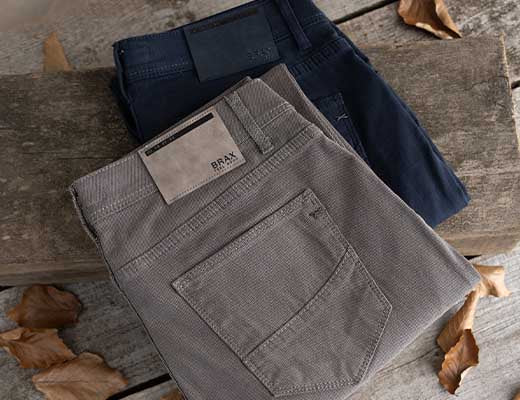
How to Make Your Trousers Last Longer
12 Mar 2019
Us country lovers live in our favourite pairs of trousers whether we are at work, out exploring the countryside, or even just having a relaxing time at home. Every time we bend our knees, cross our legs or sit down, our trousers are working as hard as we are. As with any other piece of staple country clothing, a good quality pair of trousers can last you yonks when they are taken care of. So, here is our little guide to making your trousers last for longer.

Tip: Shop our collection of trousers…
How Long Trousers Should Last
Though it can be dependent on factors such as how often you wear them, or the type of material that they are made from (e.g. jeans will take longer to wear and tear in comparison to chinos), a pair of trousers can last many years when taken care of.How Trousers Should Fit
Trousers should fit well around stress points such as the waistband and seat areas of the trousers so that the fibres can last longer. Also, a belt that is too wide can stretch and wear out the belt loops.How long should trousers be?
There's no precisely correct answer but the general consensus for men's trouser length is one inch above the ankle, or just over the top of your shoe.How To Take Trousers In at the Waist
While there are quick fixes such as tape or fabric glue, we always recommend that sewing your garments will make the alterations last long term (and stitching can be more easily removed if they need taken out again). Alternatively, we offer a free alteration service to our customers, contact us to find out more…
Tip: ‘Love Your Clothes’ have a really simple guide for altering the waist of your trousers that you can find here.
Washing Your Trousers
- Jeans (and most trousers) should be washed inside out as it helps prevent the dye running and/or damaging the pre-treated fade looks some now incorporate. Washing inside out also helps prevent leaving a washing powder residue on some of the heavier materials.
- Take care to separate your washing. Tough fabrics like denim can cause abrasion over time when thrown in the machine with less robust fibres.
- Washing at lower temperatures uses less energy, your trousers will also fade less if washed at lower temperatures.
- Use less detergent on your clothing as they tend to fade your clothes and wear them out. We advise to use only a small amount of detergent to clean your trousers.
- The more you wash your clothes the faster they will wear out. Clean spot stains rather than throwing trousers in the wash. Denim, unless dirty shouldn't be washed every wear. It is generally recommended that you only wash jeans every 4 to 6 weeks.
Drying Your Trousers
- Tumble dryers are particularly damaging to any garment with elasticity, this not only includes delicate items like underwear but anything with a stretch component, including stretch jeans.
- Air drying or line drying is by far the best way to extend the life of your clothes.
- The dry-cleaning process uses harsh chemicals that can over time damage clothes. So, keep dry cleaning to a minimum.
- Never store clothes in plastic dry cleaning garment bags. The plastic creates a humid atmosphere that encourages mould and mildew. It is much better to use garment bags with natural fibres that allow air to circulate.
Other Hints and Tips for Trousers
- Once your clothes are nice and clean it’s important to store them properly. Use wooden hangers, never wire.
- Repeated daily wear adds to the stress on fibres, the fibres are stretched with every wear. Resting a pair of jeans or trousers allows the fibres time to relax back into shape and they will last much longer if you rotate them.
- Do not pull on your belt loops as you’ll end up with pinched misshapen belt loops or your belt loops will break apart.
We hope you have enjoyed reading our guide. Have any of your own secret techniques for making trousers last for longer? We would love to hear over on social with #humesoutandabout



